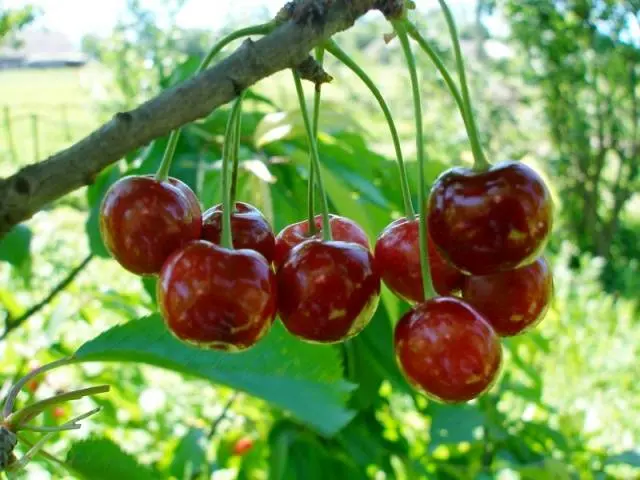Contents
Although new hybrids are constantly appearing on the market, old varieties of cherries remain in demand among gardeners. One of the proven varieties is Shpanka cherry, known for early fruiting and high yields.
History of breeding
The name Shpanka combines several varieties growing in different regions. The first mention of them met 200 years ago. Initially, the variety appeared on the territory of Ukraine as a result of natural cross-pollination of cherries and sweet cherries.
The new variety has become widespread. Her seedlings were brought to Moldova and the southern regions of Our Country. Modern types of Shpanka grow in the Volga region, Moscow region, in the Urals and in Siberia.
The main varieties
There are several types of Shpanka cherries. When choosing a particular variety, they are guided by indicators of winter hardiness, yield and fruit characteristics.
Shpanka Bryansk
The variety was included in the State Register in 2009 and recommended for planting in the Central region. A tree of medium size, with a rounded crown and straight shoots. Shpanka Bryansk has good self-fertility, is resistant to fungal diseases.
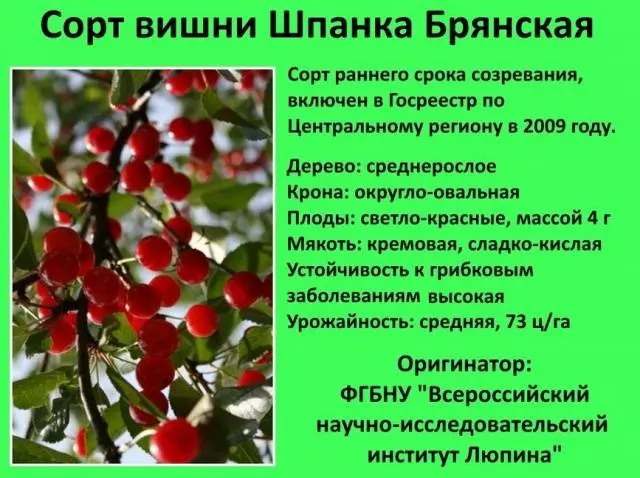
The fruits are round, weighing 4 g. They have a light red color and delicate skin. The pulp is sweet and sour in taste, gives a lot of juice. Tasting properties are estimated at 3,7 points out of 5.
Shpanka early
A tree about 6 m high. Cherry weighing 4-5 g, ripens early. The early shpanka withstands long transportation better than other varieties.
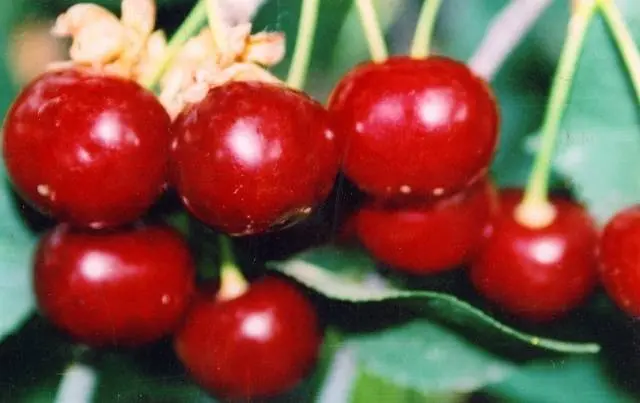
Disease resistance is average. Frost resistance is about -25 ° С.
Shpanka large
The fruits are large, reach a mass of 6 g, the main purpose is dessert. The pits can be easily separated from the pulp. The fruits are not suitable for transportation, it is recommended to find a use for them immediately after harvest.

Shpanka Kursk
Cherry up to 4 m high, tolerates frosts down to -20 ° C. Fruits weighing 2-3 g, bright red, with pink flesh. The taste is sweet, there is no sourness.
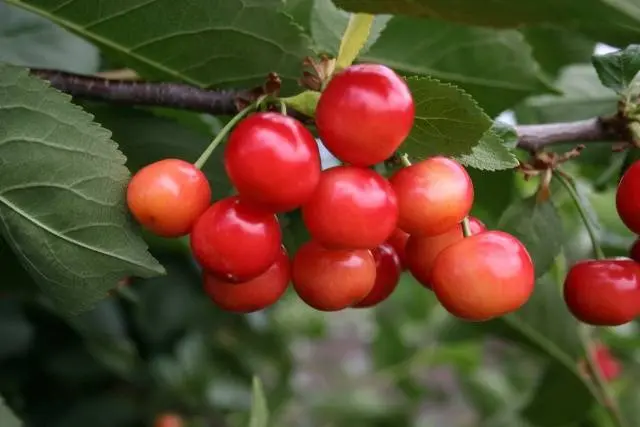
Shpanka Shimskaya
A variety of amateur selection, often found in garden plots of the North-West region. The most winter-hardy Shpanka variety.
A tree up to 3 m high. To obtain a high yield, pollinators must be planted. Even ripe fruits are pink in color and have light yellow flesh. The mass of cherries is 4-5 g. Up to 50 kg of fruits are removed from the tree.
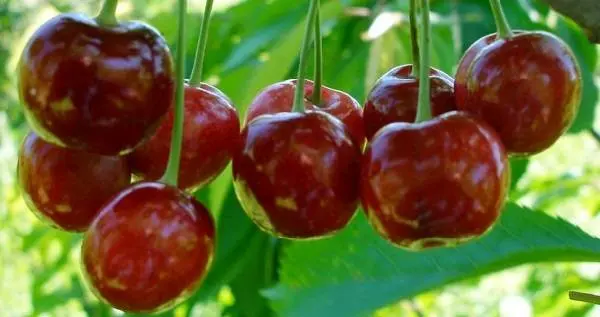
Shpanka Donetsk
Differs in fruits of scarlet coloring weighing 10-12 g. The yield from each tree is about 45 kg. The variety is resistant to temperature fluctuations, it is easily restored after a cold winter.

Shpanka dwarf
A low tree, reaching a height of 2,5 m. Cherry weighing 5 g, scarlet in color. The average yield is 35 kg.
The variety is resistant to diseases and colds up to -30 ° С. Shpanka dwarf is zoned in the central region of Our Country.

Shpanka Krasnokutskaya
Widespread in the North Caucasus. The variety begins to bear fruit 6-7 years after planting.
Shpanka Kranokutskaya is self-fertile and not susceptible to fungal diseases. Fruit weight up to 4 g. Fruits are not subject to transportation.
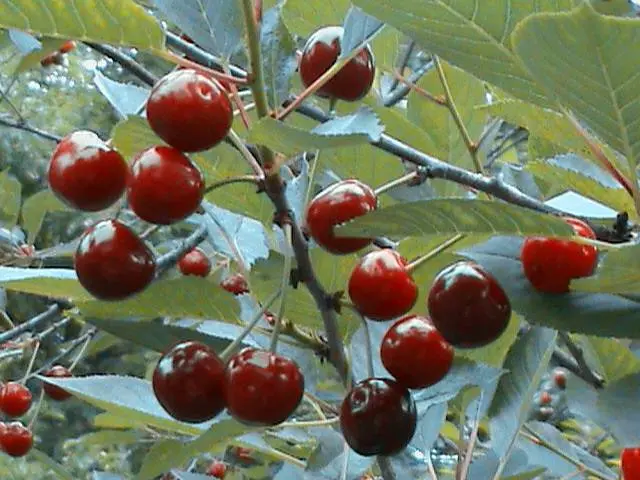
Features
Varieties of Shpank cherries have similar characteristics. All of them bring a high yield, resistant to diseases and pests.
Drought resistance, winter resistance
Shpanka cherry is drought tolerant and able to tolerate lack of moisture. However, the winter hardiness of the varieties is different. The most resistant to winter cold is the Shpanka Shimskaya variety, which can withstand temperatures as low as -35 degrees.
Pollination, flowering period and ripening period
The self-fertility of the Shpanki variety is estimated to be below average. To increase productivity, it is recommended to plant pollinators: varieties Griot Ostgeymsky or Ukrainian, Stable.
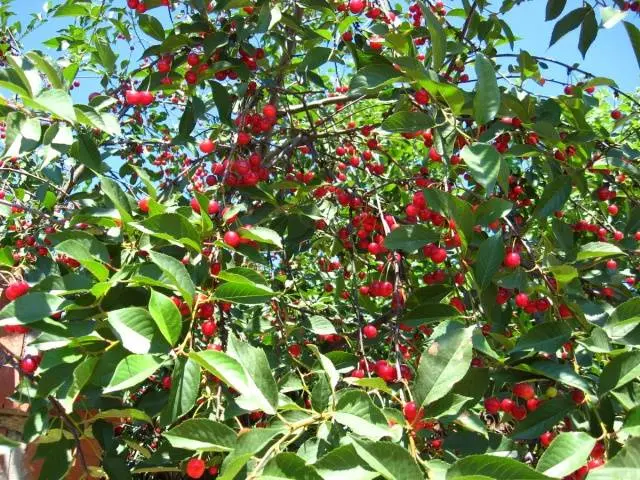
Cherries are valued for their early ripening. Flowering and harvesting periods depend on the region of cultivation. In the south, flowering occurs in May, and the crop ripens in late June. In the middle lane, the fruits are harvested in the last days of July.
Fruiting varieties Shpanka stretches for 2-3 weeks. Fruits are formed on bouquet branches. It is recommended to harvest cherries immediately after ripening, as they begin to fall off.
yield, fruiting
The first harvest from the tree is taken 5-7 years after planting. On average, the yield is 35-40 kg. The maximum yield (up to 60 kg) is harvested from trees at the age of 15-18 years.
Scope of berries
Shpanka cherry has a sweet taste, so it is used fresh. The variety is suitable for freezing, making jam, compote and other preparations. Fruits do not tolerate long transportation.
Disease and pest resistance
Variety Shpanka retains resistance to major diseases and pests of the crop. To protect plantings, it is recommended to carry out preventive treatments.
Advantages and disadvantages
Plusy cherries Spanka:
- good drought resistance;
- taste qualities of fruits;
- stable fruiting;
- high resistance to diseases;
- early maturation;
- long-term fruiting.
The main disadvantages of Shpanka varieties:
- low transportability of fruits;
- low precocity;
- branches often break under the weight of the fruit.
Features of landing
Cherries are planted in a chosen place that meets a number of conditions. Take into account its illumination, the quality of the soil and the crops growing nearby.
Recommended dates
For planting choose the autumn period in late September or early October. The timing of the work depends on the weather conditions of the area. It is important to plant a tree after leaf fall, before the winter cold snap.
Planting work can be postponed until spring. First you need to wait for the snow to melt and the soil to warm up. However, planting is carried out before the start of sap flow.
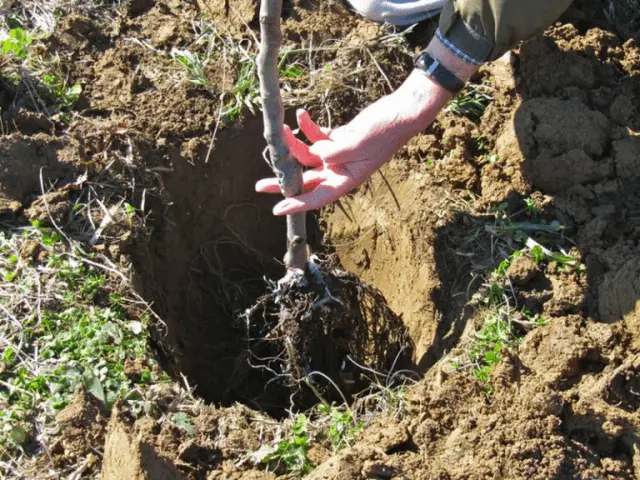
Choosing the right place
A place for the Shpanka variety is chosen taking into account a number of conditions:
- natural light throughout the day;
- lack of strong wind;
- fertile well drained soil.
Cherries are planted in an open area, away from fences and buildings that create shade. In the lowland, the tree is exposed to moisture. For culture, choose a place on a hill or a flat area.
Cherry prefers light soil, rich in nutrients. The tree develops well on chernozem, sandy and loamy soil. If the soil is clayey, you need to add coarse sand to it.
What crops can and cannot be planted next to cherries
Any kind of cherry or sweet cherry is planted next to Shpanka. Cherry without problems near other shrubs and fruit crops:
- Rowan;
- elder;
- honeysuckle;
- plum;
- apricot.
The tree is removed from other shrubs by 1,5 m or more. Shade-loving herbs can be planted under it.
It is not recommended to place cherries next to the following crops:
- an Apple;
- pear;
- birch, linden;
- ale, pine;
- raspberry, sea buckthorn, currant;
- tomatoes, peppers, potatoes.
The apple tree and other trees take a lot of substances from the soil and create a shadow. Cherries are planted at a distance of 5-6 m from them.
Selection and preparation of planting material
In the nursery, one- or two-year-old seedlings of the Shpanka variety are selected. It is best to choose healthy plants with a developed root system, without cracks and other damage.
Before planting, the roots of the seedling are lowered into clean water for 3 hours. To improve the survival of the seedling, a drug is added to the water that stimulates the growth of roots.
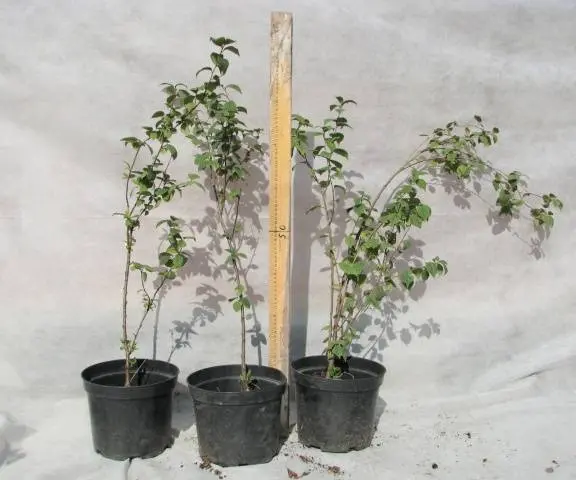
Landing algorithm
Boarding order:
- Dig a hole 50 cm in diameter and 60 cm deep.
- 1 liter of wood ash and 100 g of potassium-phosphorus fertilizer are added to the soil.
- Part of the earth is poured into the hole.
- When the soil settles, start planting. The seedling is lowered into the pit, its roots are straightened and covered with soil.
- The soil is compacted. The plant is abundantly watered with warm water.
Culture aftercare
The cherry tree needs watering only when flowering, if drought has set in the region. 4-5 liters of warm water are poured into the trunk circle.
Cherries are fed in early spring after the snow melts. For irrigation, an infusion of chicken manure or slurry is prepared. Before and after flowering, watering is carried out with a solution containing 30 g of potash and phosphorus fertilizer.
In order for the tree to endure the winter, it is abundantly watered in late autumn. Cherries are spudded, and the soil is mulched with humus. To protect the trunk from rodents, spruce branches, mesh or roofing felt are used.
Diseases and pests, methods of control and prevention
Cherry is susceptible to a number of diseases shown in the table:
Disease | Symptoms | Control measures | Prevention |
fruit rot | The appearance of dark spots on the fruit. Over time, the fruits mummify. | Treatment of trees with fungicide Topaz. |
|
destroyed | Yellow spots on leaves that spread quickly and darken. The fruits do not develop and dry up. | Spraying trees with Bordeaux liquid. | |
Antraknoz | White dots on fruits, gradually developing into dark spots. Affected fruits mummify and fall off. | Spraying with Polyram fungicide. |
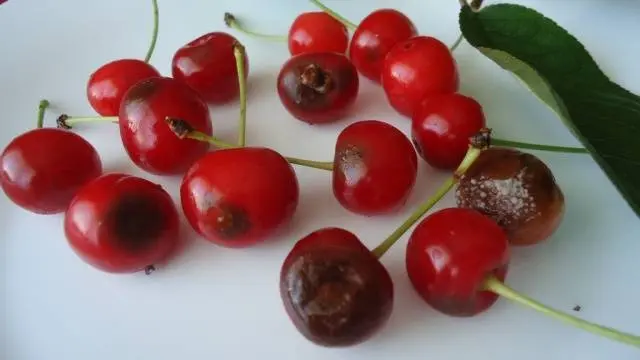
The table shows the main pests of cherries:
Pest | Signs of defeat | Control measures | Prevention |
black aphid | Twisted leaves appear on the shoots. Aphid larvae suck the juice from the leaves and weaken the immunity of the cherry. | Treatment of plantings with a solution of Fitoverm. |
|
cherry fly | The pest lays larvae that feed on the pulp of the cherry. | Spraying trees with a solution of Kemifos. | |
Weevil | Red-yellow beetles 5 mm long, feed on buds, flowers and leaves. | The beetles are shaken from the trees and harvested by hand. Trees are sprayed with a solution of Fufanon. |
Conclusion
Shpanka cherry is an early ripe variety with tasty fruits. Its varieties are grown in various regions of Our Country, valued for productivity and disease resistance.
